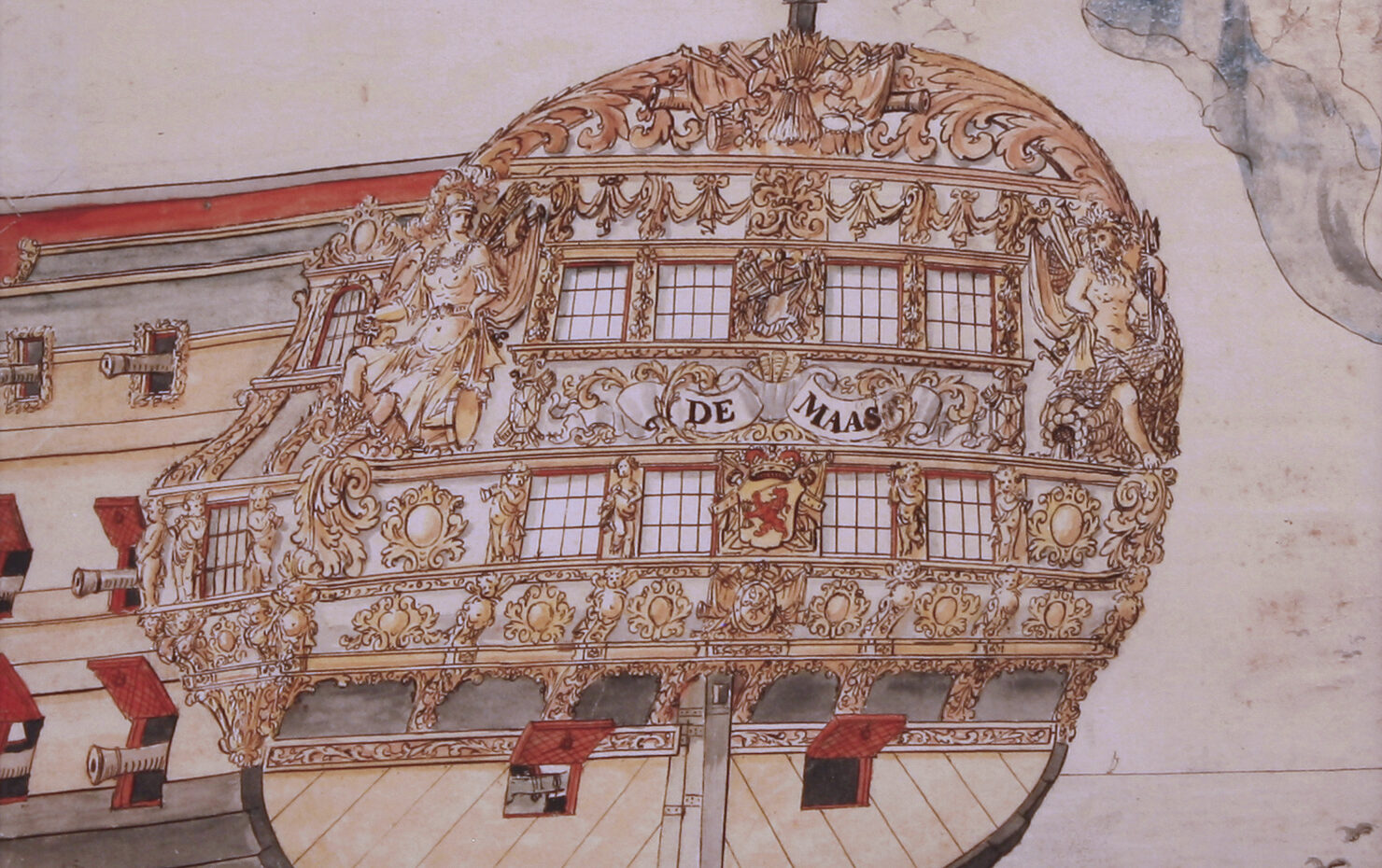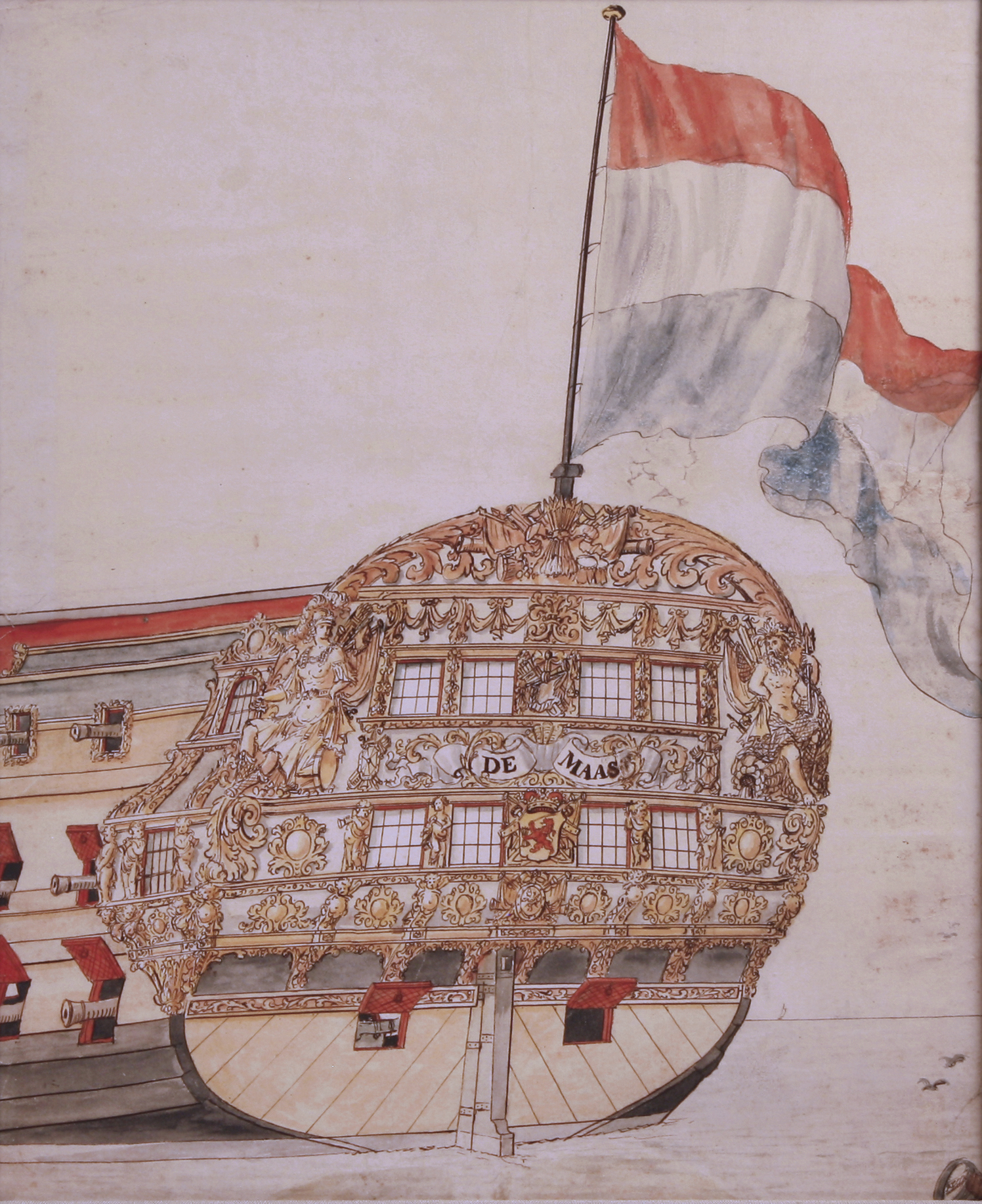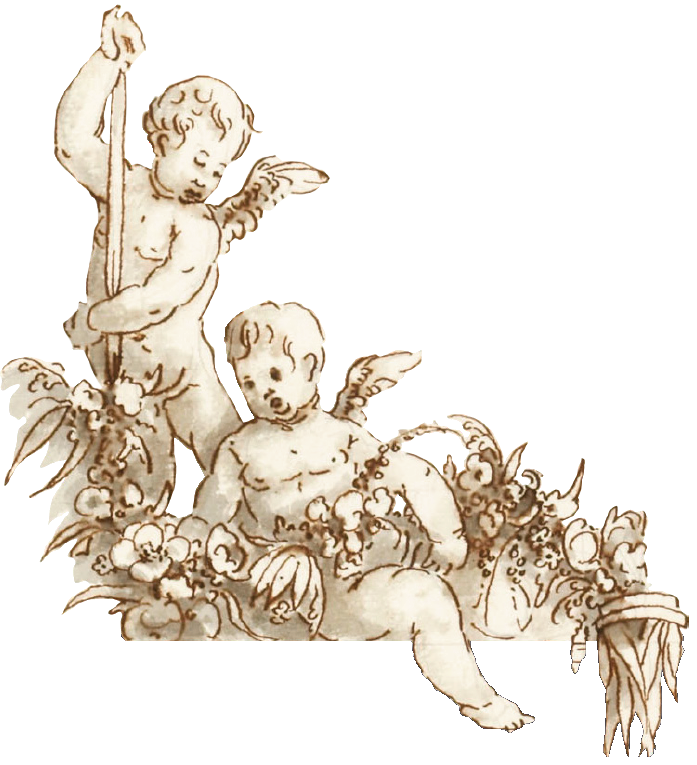Study of the stern of the Dutch warship de Maas
Creator(s): François van Douwe (1659-1735)
Date: c.1700
Materials: Work on paper; Pen, brown pen and wash
Credit Line (copyright notice for material) : © Arnold Kriegstein Private Collection

NOTES ON THE ARTWORK
Ship carving was hugely important in the seventeenth century. Powerful maritime countries paid extraordinary attention to it and employed specialist craftsmen to ornament their vessels. The aim was to impress and intimidate the enemy with splendour. Warships were symbols of state power and no effort or expense was spared in decorating them, even when the profusion of ornaments was impractical in combat. All sides of English warships were often decorated, whereas on Dutch vessels the carvings were grouped on the stern and around the figurehead as this drawing of the warship, de Maas, by François van Douwe shows.
Grinling Gibbons was born in 1648 in Rotterdam. This port town was a commercially thriving centre for the Anglo-Dutch with an important ship-building industry requiring highly-skilled carvers. Historically it has been assumed that Gibbons’ entry into the carving profession took place further afield in Amsterdam under the foremost sculptor, Artus Quellinus (1609-1668). However, it is also possible that Gibbons was apprenticed locally to Rotterdam’s leading wood and stone carver, Willem van Douwe, whose workshop was close to the Gibbons family home. François, Willem’s son, took over the workshop and worked not only for the Rotterdam Admiralty but other institutions and individuals in the Netherlands and abroad, including William III. His oeuvre was broad and was not limited to ship carving. François worked also in stone and was a good draughtsman.
Around 1670, Gibbons moved to Deptford, an important centre for shipbuilding, with royal and private docks. According to Thomas Murray, Gibbons ‘followed ship carving’ there, which makes sense due not only to the character of the area but also to his Rotterdam background.
Further reading: Ada De Wit, ‘Grinling Gibbons and his Contemporaries (1650–1700): The Golden Age of Woodcarving in the Netherlands and Britain’, 2022.



